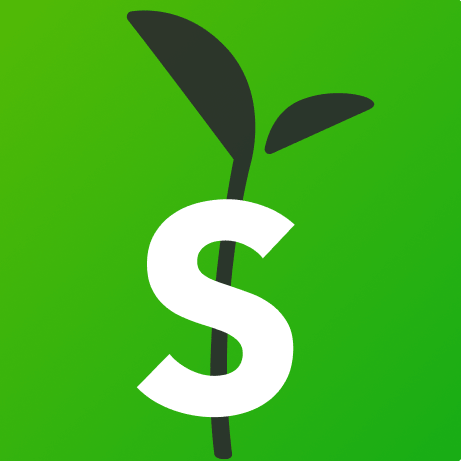The Westpac-Melbourne Institute Consumer Confidence Index lifted 3.9% in September to 84.4, with Aussie consumers making up the losses seen in August.
September's increase - albeit modest - marks the first time consumer confidence has risen since November 2021.
Westpac Chief Economist Bill Evans said the improvement is a little surprising, given continued sharp rises in the cost of living and the RBA's decision to make another 50 basis point increase in the cash rate target.
"Index reads in the 80-85 range mean pessimists still greatly outnumber optimists," Mr Evans said.
"We have only seen sentiment at these low levels in the past during recessions or major economic disturbances such as the COVID pandemic or the Global Financial Crisis."
A lot hinges on fuel prices as motorists brace for $2 fuel again
Fuel costs are expected to rise again once the government's full fuel excise of 46c per litre is reinstated on 29 September.
Not only is the full excise going to be reinstated, it's also increased from 44.2 cents per litre to 46 cents, meaning there could be a price jump of 23.9c.
This also roughly corresponds with when the fuel price cycle on the east coast is expected to peak again.
For example, 91 unleaded in Brisbane's last peak reached approximately 192 cents per litre on average - a rise of 23.9 cents would see that reach nearly 216 cents per litre.
Mr Evans notes confidence is only likely to see sustained gains once there is convincing evidence that the inflation threat is easing and the relentless rise in interest rates is nearing an end.
"The last two months have seen a significant fall in petrol prices, down from averaging $1.90 per litre in early July to $1.55 per litre during the September survey - a 17.5% decline," he said.
"Petrol price moves have an immediate impact on budgets and are often seen as a bellwether for wider inflation."
ANZ-Roy Morgan's more acute weekly consumer confidence index showed a modest 0.5% decline to 85.7% through the previous week.
The monthly average since 1990 has been 112.2.
David Plank, ANZ's head of Australian economics, also pointed to lower fuel prices potentially dampening the results.
"We wouldn’t read too much into the relative stability of sentiment, as the overall story remains the same –consumers are very pessimistic," Mr Plank said.
"It is possible that [RBA Governor Dr Philip] Lowe’s suggestion that the size of future rate increases might be smaller helped support confidence somewhat."
Are spending attitudes beginning to turn?
The Westpac Index revealed consumer attitudes towards spending improved with a 2.8% increase in the 'time to buy a major household item' sub index, while the 'time to buy a dwelling' sub index lifted 2.9% to 80.5.
Further, CommBank Household Spending Intentions (HSI) data released Tuesday revealed the intent to spend rose 0.8% in August to 115.5.
Despite this increase, CommBank Economists said weakness is being observed in discretionary spending following recent interest rate increases and a growing move to value purchasing.
"For instance while grocery spending remains high, we’re hearing customers are swapping to value products in response to higher food prices," the Economists said.
“Spending for household services has also risen 4% in August, with charitable donations leading the category, likely signaling a stressful environment for many in the community.”
This stressful environment is tipped to continue with CommBank economists noting there are significant lags between a RBA rate hike and when higher mortgage payments hit household budgets.
Speaking last week, RBA Governor Dr Phillip Lowe said the full effects of interest rate increases for the first time in 12 years are still to be felt.
“Many people with white collar jobs were able to keep their jobs during the pandemic, they couldn’t spend and instead saved by placing that money into offset accounts," Dr Lowe said.
"The reality is most of the savings buffers sit with upper and middle income households."
Advertisement
Need somewhere to store cash and earn interest? The table below features savings accounts with some of the highest interest rates on the market.
| Bank | Savings Account | Base Interest Rate | Max Interest Rate | Total Interest Earned | Introductory Term | Minimum Amount | Maximum Amount | Linked Account Required | Minimum Monthly Deposit | Minimum Opening Deposit | Account Keeping Fee | ATM Access | Joint Application | Tags | Row Tags | Features | Link | Compare | Promoted Product | Disclosure |
|---|---|---|---|---|---|---|---|---|---|---|---|---|---|---|---|---|---|---|---|---|
0.05% p.a. Bonus rate of 5.35% Rate varies on savings amount. | 5.40% p.a. | $1,107 | – | $0 | $99,999 | $1,000 | $0 | $0 |
| Promoted | Disclosure | |||||||||
4.00% p.a. | 5.45% p.a. Intro rate for 4 months then 4.00% p.a. | $905 | 4 months | $0 | $249,999 | $0 | $1 | $0 |
| Promoted | Disclosure | |||||||||
0.00% p.a. Bonus rate of 5.10% Rate varies on savings amount. | 5.10% p.a. | $1,044 | – | $0 | $99,999 | $0 | $0 | $0 |
| Promoted | Disclosure | |||||||||
4.75% p.a. | 5.10% p.a. Intro rate for 4 months then 4.75% p.a. | $984 | 4 months | $0 | $99,999,999 | $0 | $0 | $0 | Disclosure |
Image by Rodnae Productions via Pexels

Ready, Set, Buy!
Learn everything you need to know about buying property – from choosing the right property and home loan, to the purchasing process, tips to save money and more!
With bonus Q&A sheet and Crossword!





